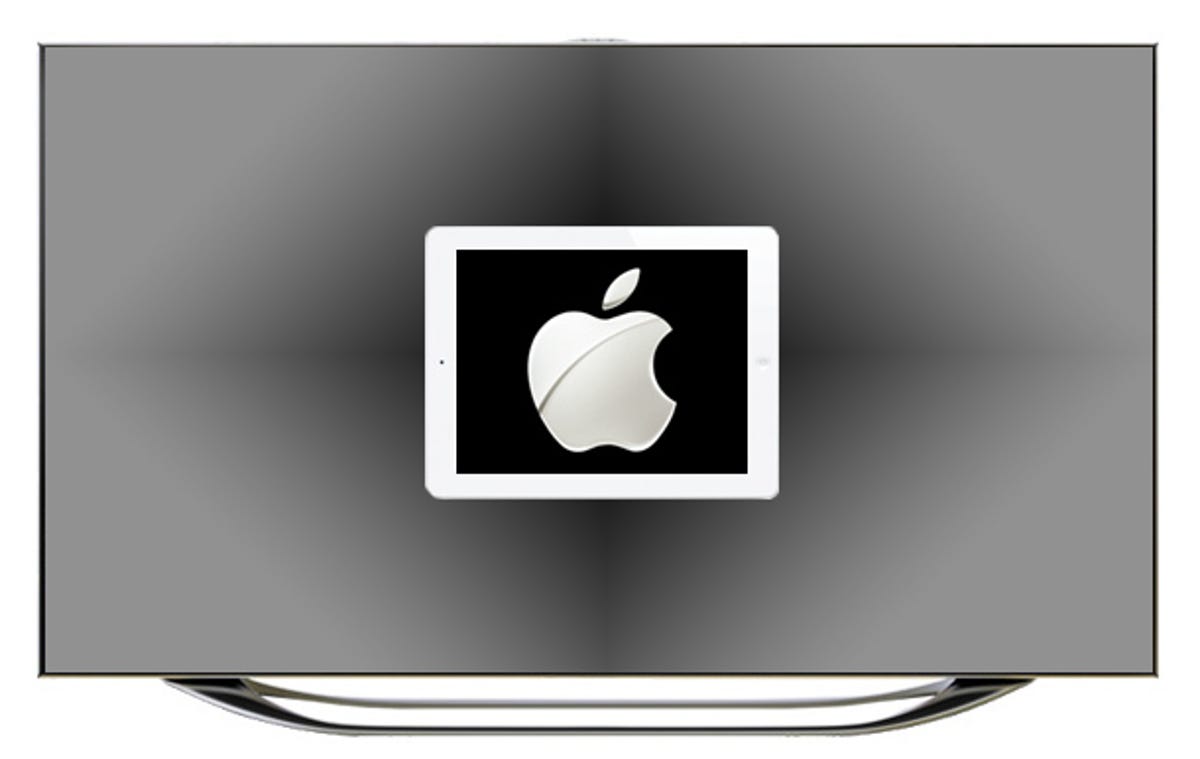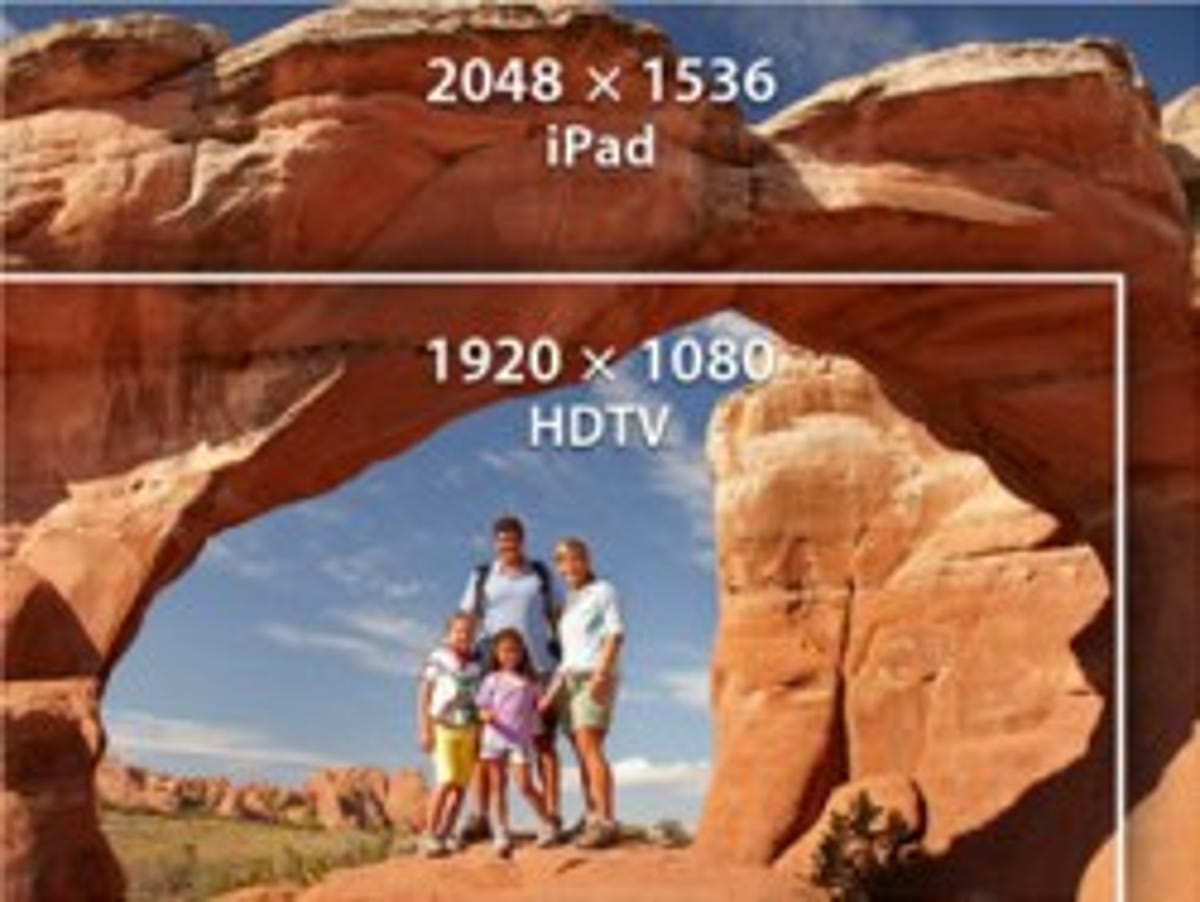
Geoffrey Morrison
With all the incessant hoopla about the new iPad, the one comparison that keeps popping up is that its 2,048×1,536-pixel resolution is “greater than an HDTV!” or “1 million more pixels than your TV!”
Not only is this irrelevant and a senseless comparison, but it has no bearing on the future of HDTVs, as some have implied.
Here’s why.
Nearly all modern HDTVs have 1,920×1,080 pixels, as in roughly 2 million little squares that make up the image. This standard, one that’s been with us since the beginning of high-definition back in the ’90s, is found in HDTV broadcasts (in 1080i form), pretty much all Blu-rays (in 1080p form), and some download services like Vudu and now even iTunes.
Up to this point, most tablets maxed out at around 720p (1,280×720 pixels), like the 1,280×800-pixel Samsung Galaxy Tab 10.1, or slightly less like the 1,024×768-pixel old iPad/iPad 2. The forthcoming 1,920×1,200-pixel Asus TF700T is one notable exception.


Apple
The new iPad’s 2,048×1,536-pixel resolution is certainly neat, but the comparison with HDTV resolution is either lazy or frivolous because there is one major difference: you’re holding the iPad closer to your face.
The human eye has finite resolution. When an object is farther away, we are less able to resolve fine details. This is why at 50 feet you can see a person has hair, but not the individual strands of hair. Hold that person at arm’s length, and you can count all the (ahem, remaining) follicles you want.
At the distance most people sit from their televisions (roughly 10 feet), 1080p is plenty. In fact, with smaller televisions under 60 inches or so, most people won’t be able to tell the difference between a 720p and 1080p television.
Can you see the resolution difference between the old iPad’s screen and the new one? I have no doubt, because you’re holding it at less than arm’s length from your face. You can hold the new one even closer, filling more of your field of view and creating a larger apparent image.
Back to televisions
Whether you can tell the resolution difference between the old iPad and the new at 10 feet has no relevance to the world of televisions. The next jump in resolution is going to be 4K, and even that is pointless, as I’ve covered before. We’re not going to see 1536p televisions, even if/when the long-rumored Apple iTV comes out.
What would be a comparable “Retina” HDTV resolution? It’s impossible to say, because there isn’t a set viewing distance, nor is there a set image size. People picking up an iPad will naturally move it closer to or farther from their face for their personal optimal viewing experience. Apple can calculate this distance, within a few inches, for every one of its potential customers (and, of course, it knew the exact size of the screen and its pixels).
Related stories
- LED LCD vs. plasma vs. LCD
- Why all HDMI cables are the same
- Why all HDMI cables are the same, Part 2
- Is plasma HDTV burn-in a problem?
- Is LCD and LED LCD HDTV uniformity a problem?
There isn’t a comparable figure for televisions. Sure, for most people the distance is roughly 10 feet, but not all. And screen sizes vary greatly. I grew up with a 19-inch TV, now I make do with a 120-inch TV. TV manufacturers aren’t going to start making TVs with drastically different resolutions to suit different screen sizes. It’s not cost-effective, nor is it rational when for most people 1080p is more than they can see on undersize televisions from the distance they’re sitting.
The bigger issue is one of content, as in, there is none. For the most part, video content on the Web is 720p, which isn’t great (largely because it’s highly compressed), but is at least generally better than standard definition. The maximum resolution of video content you can get online, for the most part, is 1080p, and this is only a small fraction of the content right now. Either way, the iPad scales the content to its 2,048×1,536-pixel screen. If you’re curious how it does this, check out my article on upconverting.
This is nothing new; all computers do it. If you’ve ever watched Netflix on your PC or Mac, it was scaled to fit the screen. Unless it’s a small laptop, the resolution is probably greater than 720p.
I’m not bashing the iPad, nor am I saying the new screen isn’t cool. The fact is, screen resolution was never a real issue for most people. The new screen is just nicer icing on an already pretty cake. The reason why most people buy an iPad (or a Kindle Fire) is the access to content, via iTunes or Amazon, something all other tablets lack or are woefully deficient.
What I am bashing is the cognitive leap some are making in the media that the higher-resolution screen has any relevance to HDTVs. It is a completely different world, one that admittedly is growing closer all the time, but not when it comes to resolution.




